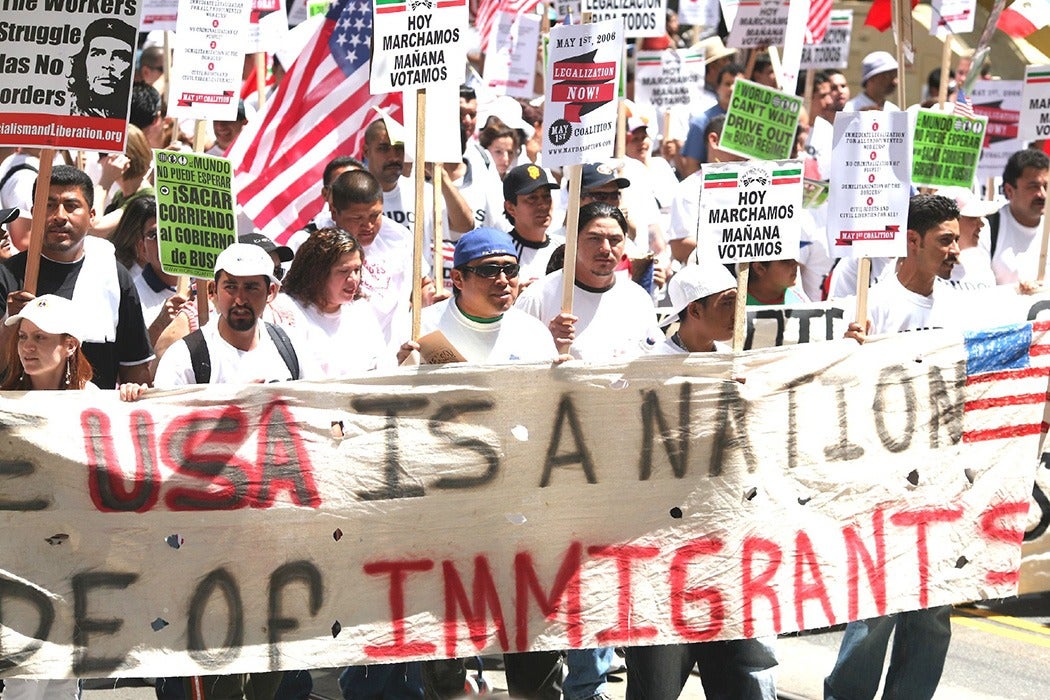On May 1st, International Workers Day, immigrants and their supporters will hold marches all over the country. Some of the events’ organizers are based in Latino immigrant communities; labor unions, civil rights organizations, and other kinds of progressive actors will also be involved.
May Day as an occasion for grassroots protests is an artifact of the late nineteenth century. At that time, the mobilizations were led by radical unions, which included large immigrant memberships. But in the following decades, the labor movement became dominated by more moderate unions, often with virulent anti-immigrant views.
By 2006, as Victor Narro, Kent Wong, and Janna Shadduck-Hernández write, U.S. unions were only beginning to reincorporate the needs of immigrant workers into their programs. In 2000, at the urging of immigrant union members, the AFL-CIO reversed longstanding policy by calling for unconditional amnesty and protections for undocumented immigrants.
In 2005, the U.S. House of Representatives passed a bill that would have drastically increased penalties for undocumented immigrants and anyone employing or assisting them. In response, starting in March of 2006, immigrants in several cities held massive marches. Narro, Wong, and Shadduck-Hernández note that these were largely spontaneous mobilizations, promoted by Spanish-language media but organized mostly without guidance from either unions or immigrant community leaders.
Some activists called for an enormous strike and boycott on May 1st, referred to as “The Great American Boycott” or the “Day Without an Immigrant.” Not all unions supported this idea. Some worried that striking would represent a violation of their union contracts, and others feared the movement didn’t have enough time to prepare for a successful action. Ultimately, a wide range of organizations participated in May Day marches and protests in some form.
Meanwhile, as Chris Zepeda-Millán writes, another rift in the May 2006 organizing efforts was between immigrants from Latin America, particularly Mexico, and those from other parts of the world. This was particularly true in New York City, with its hyper-diverse immigrant population. Zepeda-Millán quotes organizers from Haitian, Chinese, Desi, and Senegalese groups who had a hard time convincing their members that the issue was not just relevant to Mexicans.
“Perhaps because Latinos are the quintessential ‘illegals,’ many non-Latino immigrant groups with undocumented populations… did not feel equally threatened,” Zepeda-Millán writes.
Ultimately, New York did hold major protests, but they were not nearly as large as those in Los Angeles, with its high concentration of Mexican immigrants.
Today, organizers are again facing the question of how people who base their politics around diverse identities, as immigrants, workers, Latinos, people of color, or progressives, can mobilize for a common goal.







